Eurail Passes are famous as a way to save money while exploring Europe, but they are also confusing and often misunderstood. They are still an amazing money-saving tool for certain types of travelers, and not a wise idea for most others. Before Europe introduced dynamic rail pricing (like airfares, where the price varies depending on when you buy it), a Eurail Pass was an easy way to save money since all tickets had fixed prices that were generally fairly expensive. These days most travelers can save far more money just by buying their train tickets at least a few weeks in advance.
That said, Eurail Passes are still great for longer trips and especially for people who like to make plans as they go. Dynamic rail pricing made advanced tickets much cheaper, but it also made last-minute tickets MUCH more expensive. Below we will discuss Eurail Passes and whether they are a good idea for your trip or not.
Disclosure: This is a reader-supported website and some of the links are affiliate links where a small commission is paid to help keep this site going.
Note: This article was written in 2012 and has been continuously updated since then, so all information is current as of April, 2024.
Eurail 2024 changes: New countries and a mobile version

Aside from that it’s just the normal fact that they have updated the timetables as of December 2023 and have a few promotions going on, but those usually don’t happen over the busy summer season.
Eurail passes are now available in a mobile version
Until very recently, Eurail Passes were only available in paper form and they were quite confusing at first. You’d get a pass with a series of empty boxes on it and you’d need to enter your trip before you’d use your pass each day and then have the first conductor verify it. If you lost your ticket (and this was not uncommon), it was a whole ordeal to attempt to get a replacement.
Again in 2024 Eurail offers a fully mobile version that is delivered instantly to your mobile device with no delivery fee. And if you somehow lose your phone, you can resume using your Pass on your replacement with no extra headache. This is MUCH more convenient in every way and as long as you can keep track of your phone you’ll always have your train pass handy.
If your trip will be 2 weeks or less, a Eurail Pass probably won't be worth it

Eurail Passes are ideal for travelers on longer trips, and especially those who don’t want to plan all of their destinations and dates far in advance. If you have your itinerary pretty much planned out and you don’t require much flexibility, you’ll be far better off just locking in your dates and buying your train tickets as early as you can. Again, they can be surprisingly cheap if you buy 2 to 4 months out.
If you are age 27 or younger, a Eurail Pass is probably worth it

With this in mind, if you are lucky enough to still be 27 or younger, you should seriously think about getting a Eurail Global Pass Youth, partly because the sense of freedom instantly gets more expensive at age 28. The age cutoff was 25 until recently, so this change is a great deal for anyone who will be 26 or 27 at the start of their trip.
You aren’t guaranteed to save money by buying a Youth Eurail Pass, but chances are good that you WILL save money and you’ll definitely save a lot of hassle as well. Especially now that Eurail Passes come in a mobile form, it’s even that much more convenient to just hop aboard any train that is about to leave the station and not worry about buying or even having a ticket. Especially for young people, it can be really fun and exhilarating to literally just walk into a train station with your backpack and look at the departure board and then decide where to go at that moment.
If you are age 60 or over, a Eurail Pass could also be great value
Another fairly recent change is that anyone who is 60 years or older at the start of the use of a Eurail Pass now gets 10% off the normal adult fare. That new discount is going to make this a great value for many travelers who might have been on the fence about buying a full-price pass before.
>>>Check prices on Eurail Passes
If you are planning on traveling in 1st Class anyway, a Eurail Pass is probably worth it
Most 2nd Class trains provide similar comfort and legroom to Business Class airline seats, or at least close enough, so for most people it’s not worth the added expense for 1st Class. However, if you are rich or elderly or fear contact with strangers, a 1st Class Eurail Pass is probably worth it no matter what.
Not only do you get much more comfort and legroom in 1st Class, with only 3 seats across instead of 4, but there is another advantage to 1st Class on European trains. Since it’s mostly business travelers and wealthy people traveling in 1st Class, the carriages are almost always mostly empty except in the mornings and late afternoons between large cities. In 2nd Class the only available seats might be two seats in an 8-seat cabin with all the other seats taken up by a loud family or a group of rowdy friends. In 1st Class you are all but guaranteed a peaceful ride, and usually plenty of empty seats from which to choose.
A hidden Eurail Pass benefit: Making extra stops on travel days for free

Brussels in particular is one I recommend a short stop in because the small historic center around what they called the Grand Place is amazing and gorgeous, while the rest of the city is rather boring by European standards. With a Eurail Pass you can jump off the train in Brussels and explore the city center for a few hours (luggage storage is cheap and easy) and maybe have lunch, and then hop on a later train to complete your journey to Amsterdam. There are opportunities like this on many if not most trips between larger cities, and if you buy the point-to-point tickets you have to stay on the train you booked.
Another example is the high-speed train between Barcelona and Madrid, which takes about 2.5 to 3 hours in each direction. There are some interesting cities in between, but in this case you could take a morning train from Barcelona to Madrid and then check into your accommodation, and then hop on another train from Madrid to Toledo, which takes about 30 minutes and costs €14 each way. Toledo is a historic and fascinating town, but it’s also pretty small and you can explore the main sights in an afternoon. With a Flexi Eurail Pass where you buy a certain number of travel days, you can save more money by adding on these sorts of nearby stops on travel days.
If you'll be touring major cities within ONE country, a single-country pass might be perfect, and Second Class passes are available for all ages
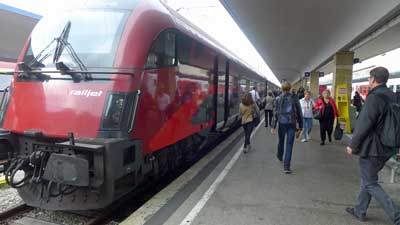
Single-country passes are still available and they MIGHT be good value for you, but it depends on which country and how much traveling you’ll be doing. If you plan on going all over a larger country such as Germany, France, or Spain, and especially if you like to make plans as you go, a Single-country pass for one of those might be your best deal. On the other hand, smaller countries (such as the Netherlands) or countries where train tickets are already fairly cheap (such as Italy) might be harder to get value out of. Long story short, for single-country passes you really need to check fares of the places you plan on going and see how they add up compared to the pass.
>>>Check prices for Single Country Passes
Eurostar (between London and Paris or Brussels or Amsterdam) tickets are now included for Eurail Pass holders for a €30 reservation fee
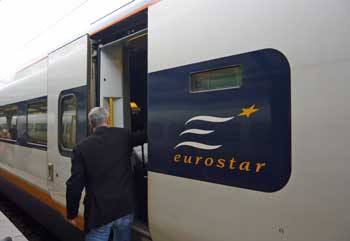
Our recent tests show that Eurostar fares one-way from London to Paris can be as low as €49 if you book about 3 months out, or as expensive as €214 for the same seat if you wait until the day of travel to buy. Round-trip/return tickets can be even cheaper if there is a promotion running.
>>>Check Eurostar prices
If you are on a really low budget, a Eurail Pass isn't a good idea
Here’s the thing. As we’ll discuss below, there are many potential benefits to Eurail Passes, and they will often save you money, but they do cost a lot and they only really save you money when traveling in the more expensive countries.
So let’s say you have a flight to Rome and then US$2,000 to last you a month after you arrive. Buying a Eurail Pass before you go would help you see a lot in that month, but you’d practically need to sleep in parks for your funds to last the whole time. You’d be better off moving slowly in the southern countries, or just in Italy itself, as a way to have the best holiday on your budget. You might also be tempted to use a Eurail Pass mostly on night trains so you can save the cost of a hotel or hostel, but those aren’t ideal for most of us.
The cheapest way to get around Europe by rail is to buy all train tickets online at least a couple months in advance. The fares are low, but they are non-refundable and non-changeable. See how far in advance you should buy train tickets to get those attractive fares.
If more than a little of your travel will be in eastern Europe, a Eurail Pass isn't a good idea
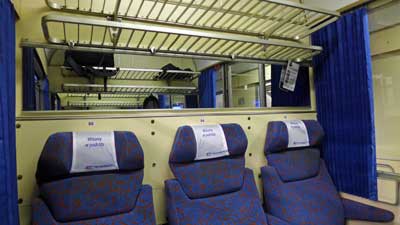
The good news is that the trains operating in this region, and the buses that operate alongside and/or where trains aren’t running, are quite cheap. So if any significant part of your trip will be into this region, a rail pass doesn’t make sense.
Basic types of Eurail Passes
Long gone are the days of the simple options, replaced by specialized passes that are meant to appeal to different styles. It should be pretty easy to figure out which is best for you, and then keep going down the page to decide if it’s worth it at all.
Eurail Global Pass – 4,5, or 7 days within 1 month or 10 days within 2 months
Until recently the minimum number of travel days with 10 days within 2 months, but now you can buy as few as 4 days within 1 month for about €200 to €250 (for first class). This can actually be an interesting strategy if you are planning many shorter and cheaper trips (like within Italy or Eastern Europe), and also 4 or 5 longer trips such as Berlin to Amsterdam. This way you can buy only 4 or 5 travel days and only use them for your most expensive travel days, and just pay as you go or buy cheap advance tickets for your other journeys.
Eurail Global Pass – 15 to 90 consecutive days
This variation allows for unlimited travel on the system for between 15 and 90 total days. They are really only a good idea for people who are certain they are going to travel very often, with much of it being in the north of Europe. The problem with them is that if you really try to get your money’s worth, you will probably ruin your trip by spending too much time on trains in general. On the other hand, if you will be in Europe for 2 or 3 months and plan on traveling around a lot, you can get a LOT of use out of a longer pass. The 3-month pass is around €900 so it’s literally about €10 per day. Imagine going back and forth between Berlin and Munich or Barcelona and Madrid for €10 per day!
One Country Pass
Obviously these are for travel within one country only. Again, they can be great deals if you plan on extensively moving around one particular country.
Where to buy your Eurail Pass
Eurail Passes are cheapest and easiest to buy online, primarily from two main sources which offer all the same products at the exact same prices:
This is a reliable company based in the Netherlands but with fulfillment offices in the US and Ireland. Price of Travel is a partner with this company, and if you use the links of this site we earn a small commission to help keep this site online. Eurail.com is usually cheaper than RailEurope (discussed below) by the way.
They were founded in the 1930s and are based in New York, but owned primarily by the French and Swiss rail companies. They offer free shipping (2 to 3 business days) on all orders of US$399 or more, although now that a mobile version is available, this is meaningless. Price of Travel is a partner with this company, and if you use the links of this site we earn a small commission to help keep this site online.
Reservations on European trains for rail pass holders
For most of the fastest trains between major cities you’ll need to reserve a seat even with a rail pass. It can usually be done just before you leave and the cost is usually around €5. Here’s a full list of which European trains require reservations and which don’t.
Reservations are required on all intercity (longer distance) trains in or involving France, Spain, Switzerland, and Italy. For most trains in Germany, Austria, Netherlands, Belgium, and most of eastern Europe, you can usually find trains that don’t require seat reservations. Often, if you don’t leave until after 9:30am or so, you can ride on any train with no seat reservation, but you have to research each leg to be sure.
How to determine which trains require seat reservations, and also get schedules
You can click on the link just above this section for a list of countries and their seat-reservation policies, but in some cases it’s actually a bit more complicated than that. For example, you can generally ride without a seat reservation on fast ICE (Inter City Express) trains in Germany if you depart after 09:30 in the morning. They do this to free up seats for business travelers who pay full fare, and they don’t mind filling up seats with rail pass holders on trains leaving a bit later.
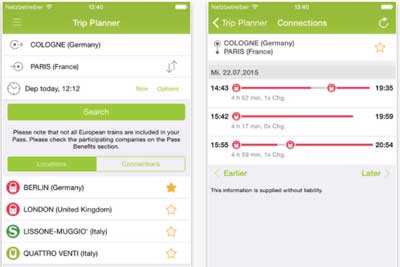
Night trains in Europe are making a comeback

Fast forward to 2024 and night trains are not only expanding service, but they are very trendy. Some of it is nostalgia for the older way of getting around, but most of it is for environmental purposes combined with European hatred for the “low cost airline” experience with RyanAir and Easy Jet etc.
Personally I’m still not a fan of night trains because I find it difficult to sleep on them since they often get decoupled at interim stations in the middle of the night and then coupled onto other trains coming from other places, and I can’t sleep through any of that. But still, they are worth looking into and they are fun to try at least once.
A bit of warning that they tend not to be cheap and even if you have a Eurail Pass you’ll almost certainly want to book a sleeping cabin with a bunk or couchette, and that will come at an extra fee. On the other hand, if you are the sort of person who can sleep sitting upright in a normal seat, then that won’t cost any extra on most overnight trains.
Factors to consider when thinking about any Eurail Pass
Assuming you know which Eurail Saver Pass option is the best one for your type of trip by now, we’ll go over the main factors that should help you decide whether it’s the best idea for you.
Eurail Passes are best for standard ‘medium length’ journeys

However, if you are determined to travel between Rome and Paris, it’s about a 14-hour journey that will almost certainly be overnight. In this case, a cheap plane ticket is probably better, although taking shorter hops on the train is even better, so spend a day or two in Milan or Lyon on the way instead.
And of course, if you prefer to stop in various small towns between the big ones, then a Eurail Pass won’t pay off, except for the traditional kind for unlimited travel in a given period.
Eurail Passes are better value in northern Europe, France, and Spain, and poor value in Italy
Once you do a bit of research you’ll quickly learn that train tickets (and almost everything else) are much more expensive in Germany, Netherlands, Denmark, Sweden, Norway, and Finland than they are in Greece, Italy, Portugal, and Spain. With this in mind, the regional passes can make sense if you are spending time in the south, but the Global Passes almost certainly won’t. Train tickets in Spain used to be fairly cheap, but in recent years they’ve added new high-speed trains between the major cities, and these are quite expensive.
Unlike most other countries, Italy really subsidizes its train tickets so they are quite reasonable even on travel day, and very cheap if you buy a month or more in advance. For example, you can go between Rome and Florence for around €49 if you buy on travel day, and as little as €19 if you buy well in advance. In most other countries, fares are double or triple that much for similar rides.
So consider your planned itinerary. If more than half of it is in the Mediterranean countries then look into a Regional Pass or just buy tickets as you go, because they tend to be pretty cheap. But if you are planning on spending at least half your time in Paris and places to the north of it, then a Eurail Pass is probably a money saver because those tickets are expensive.
Trains are almost always better than planes
Flying sucks, even in Europe
Until you’ve experienced the joy of traveling around Europe by train you might be tempted to “maximize” your time by flying low-cost airlines between each city. This would be a mistake. In order to get truly cheap airfares you have to purchase long in advance, buying non-refundable tickets. You might also have to commit to flights in the very early morning or in the late evening, because cheap tickets on convenient flights sell out quickly.
And again, most European airports are around an hour outside of the city. They are often on the main train lines, which helps, but still you have to deal with the madness of security and also try to get there at least two hours early. From one city center to any other city center it’s about 5 hours minimum, even if they are close, and those are pretty miserable hours.
Train travel is a positive experience

Not only are all the seats comfortable on trains, but you also have an interesting view most of the time. Better still, trains deposit you in the heart of every city, which is usually the neighborhood with the cheapest hotels and food. It’s a wonderful feeling to step off a relaxing train ride, buy a hot dog or sandwich at a local shop, and then be in your hotel room only about 10 minutes later.
Eurail Passes are better than train tickets alone
As someone who enjoys the process of crunching numbers and looking for value, I have to also mention that I’d buy a Eurail Pass even if it seemed like it would cost a bit more than the individual tickets. With a pass you get an extra element of freedom that is worth a lot more than you might expect until you’ve used one.

Let’s say you are heading from Amsterdam to Hamburg tomorrow morning. The 09:00 train you planned for might seem a bit ambitious after a long night out, so you can instead opt for the 10:00 or 11:00 train. As long as you walk into Centraal Station 10 or so minutes before departure, you are on. If you are flying you can’t change your ticket, and if you are buying train tickets as you go you have to be in line at the international desk at the train station at least 30 minutes early, and even then you might miss it if they are busy.
Freedom and getting to feel like a big shot
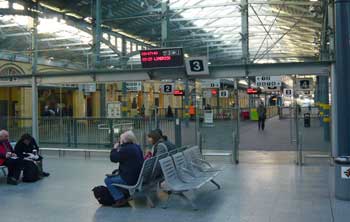
Let’s say you are staying at a hostel in Brussels, and two groups of new friends suggest that you go along with them to their next stops. One group is going to Bruges, which is a short and cheap journey, so you can join them by buying individual tickets (unless you have the unlimited pass, making it free). Then you restart your trip from Bruges, on to your next destination. The other group is headed to Berlin on a night train, which is long and expensive, but with a Eurail Pass you don’t even have to think about the cost. On you go, just like a rich person.
Buying a Eurail Pass is great for those who might run out of money
We all know people who keep meticulous track of every penny they spend, and who are always putting money away for a rainy day. And we all know people who can take a US$100 “entertainment fund” and burn through almost all of it in just a few hours. For the first type of person, a Eurail Pass can help you keep track of expenses, but it’s really the second type of person these are best for.
It’s sad to hear about people who have big plans to see their dream destinations, but they run out of money for transportation halfway into the trip, so they have to just stay put until they fly home. It happens. Locking in your major transportation costs before you leave home, and probably saving money in the process, is a wise move for anyone who isn’t as disciplined as they’d like with their money.
>>>Check prices on Eurail Passes
Bottom line: If you want to keep travel costs down, your choices will usually be a Eurail Pass or buying tickets at least a month or more early
In the last few years, almost every long-distance train ride in Europe has switched to a pricing system similar to low-cost airlines. In other words, tickets go on sale 2 to 6 months ahead of time at very low prices, and they keep getting more expensive as the train fills up and the date approaches. For most trips where a rail pass is possible, this is how things stack up:
Cheapest possible way: Buy advanced (non-refundable, non-changeable) train tickets at least 30 days in advance
Next cheapest way: Buy a Eurail Pass and make seat reservations as you go, usually only a day or less in advance.
Most expensive way: Buy train tickets as you go, or less than a week in advance.
Thinking about it this way should make the choice a bit easier. If you are the type who likes to plan each day and travel segment long before you even leave home, then buy tickets online for the best prices. This can be the best strategy for most shorter trips (10 days or less) because you simply don’t have enough time to change many things as you go anyway.
Buying a Eurail Pass won’t be quite as cheap, but you are buying a LOT of flexibility with the extra money. If you dream of making up your plans as you go, or even making up your plans just a few days in advance, this is almost always your best bet.
But if you wait too long, and just show up looking to buy train tickets as you go, they are going to cost a fortune. As recently as only a few years ago all seats would be the same price on many rail systems, so you could always just wing it. When each country computerized its rail systems so they can sell advanced tickets cheaper, they also had to keep track of seat reservations, so the whole pricing structure had changed to favor advanced ticket buyers and rail pass holders over those who’d prefer to just hop on any train as it is leaving the station.
Have a rail pass or itinerary question of your own?
It wasn’t planned but scores of people began asking me rail pass and itinerary questions at the bottom of this article and a few others. I’m happy to keep answering them and now I’m trying to organize them better as well so they are easier for other people to find.
If you have a question about specific types of European rail passes, please ask it in the comments below.
But if you have a question more about a European itinerary or other non-rail-pass questions, please click over to the European itineraries Q & A article and ask in the comments of that one.

Hi Roger,
I’m planning to make my study abroad trip this September into a small vacation for about 15 days. I’m starting out in London to stay in Leicester for about a day. Leicester to Edinburgh for a stay lasting 3 days. Edinburgh to Paris for a stay of 5 days, while maybe squeezing a trip to Belgium. From Paris to Suzzara, Italy for a stay for about a week. While in Suzzara, I hope to visit Milan, Venice and Tuscany. Do you think the Eurail Global Pass for 15 days would be enough for this trip? Should I just use busses in England (which are fairly cheep), and just book a reservation from Edinburgh to Paris? Should I use local trains in Italy and buy tickets there in person since they are subsidized instead of the global pass?
Thanks,
Jackson
Jackson,
This sounds like a very interesting trip. The train fares within the UK are insanely high if you buy at the last minute, but you can get surprisingly good deals if you buy a month or two in advance. The same is true of a flight from Edinburgh to Paris and from Paris to Milan for your visit to Suzzara, Italy. The trains in Italy are also quite cheap if you buy well in advance so I’d recommend booking as soon as you are sure of your schedule.
Eurail Passes can be amazing for longer trips and for people who really want to make plans as they go. But the per-day price of the Global passes is really high and you should be able to get those individual train tickets for much less than the price of a Eurail Pass.
The bus service in the UK is decent, but as long as you buy early you should get good enough deals on trains that they will be the better option. Let me know if you have any other questions. -Roger
Hi Roger
My wife and I are in the early 60’s. We want to travel from Rome to Bern, then from Bern to Prague, then from Prague to Berlin, then from Berlin to Amsterdam. We will spend on average 3 nights per city. What would be the best mode of transportation and logistics around it?
Regards
Joey,
From Rome to Bern I’d take the train. It takes about 6.5 hours, which is about the same amount of time it would take to fly to Zurich and then take a train to Bern, but the train takes a stunning passage through the Alps so it’s FAR more enjoyable. From Bern to Prague the train takes about 10.5 hours so it’s much better to take the train from Bern directly to Zurich Airport and then fly to Prague from there.
From Prague to Berlin the train takes about four hours and it’s your fastest way when you include airport transportation and security lines and all that. From Berlin to Amsterdam it takes a bit over six hours by train. You could fly in about the same amount of time, but personally I’d take the train for sure because it’s FAR more pleasant than fighting airport transportation and crowds and all of that. The scenery on that route is fairly dull, but at least your seats are larger and you can get up and walk around and order food or drinks and all that.
In all cases (except Bern to Zurich Airport) the train and plane tickets will be cheaper the longer in advance you buy them. For Bern to Zurich Airport it’s a fixed price and they only go on sale 30 days in advance. Let me know if you have any other questions. -Roger
Hi Roger,
Your article says “Those 28 years old or over must buy the 1st Class version of any Eurail Pass”, but the Eurail website allows me to choose second class for any of the adult passes I have looked at, including the global pass. Am I missing something? Am I going to get a nasty shock if / when I get to the ‘purchase’ phase?
Cheers.
Neil,
Based on your question I now know that they changed this rule among the many other changes earlier this year. It used to be that people 26 and older could only buy a First Class Eurail Pass, and a couple years ago they changed it to 28 and older and now they apparently allow anyone to buy a Second Class pass. The Youth version is quite a bit cheaper if you are young enough, but until this change the Adult version of Second Class wasn’t even an option. Thanks for letting me know and I will update the article. -Roger
Hi!
Thank you so much for the detailed explanation of the Eurail. I’ve been reading so many articles and this one was the most helpful. I do have a few clarifications. My family and I (2 Seniors, 3 Adults, 4 Youths) will be traveling to Europe for the first time this May. We’re planning to visit the following cities:
1. Amsterdam (3 days)
2. Berlin (3 days)
3. Vienna (3 days)
4. Lucerne (3 days)
5. Rome (1 day)
6. Milan (1 day)
7. Tuscany (1 day)
8. Venice (1 day)
9. Barcelona (4 days)
10. Paris (5 days)
We’re planning to stay in Rome for our trip in Italy and just take the trains to go to other cities since they’re not that far apart. Should we get the Eurail Global Pass? Since you mentioned in the comments that the Eurail Global Pass doesn’t cover metros/subways should we just get the 15 days within 2 months instead of the 1 month continuous Pass? Does the Eurail Global Pass cover any of the inter-city metros in the aforementioned cities?
Thank you!
Pat,
I’m glad the article was helpful. The first thing you want to do is check how much the individual train tickets would cost if you bought them at least a month or two in advance. If you buy that far in advance you’ll be able to buy “supersaver” train tickets that are often quite cheap and usually cheaper than the cost of a Eurail Pass. The passes are excellent for people on longer trips who want to make plans as they go, but for people on trips where all the stops are planned in advance, the supersaver tickets usually come out cheaper. Just check the train fares between those cities for 3 months in advance (in other words, check for the fares in early May) and see what it adds up to.
As far as Italy is concerned, I wouldn’t recommend that. First off, you won’t be able to see much of anything with just one day in Rome. And the train to Florence takes about 90 minutes and then another two hours to reach Venice or Milan. If you did that on a day trip it would mean spending more than 7 hours of those days on trains going back and forth. I just finished an article on planning an Italy trip and I think it will help.
The short version is I’d skip Milan and take a train from Lucerne to Venice and stay there about 24 hours. Then take a train to Florence (in Tuscany) and stay there for 2 or 3 days and then take a train to Rome and stay there for 2 or 3 days. I’d cut back on Barcelona and Paris to make sure you have enough time to enjoy Italy. Also, those high-speed trains in Italy are often late, which makes them a bit frustrating. And of course you’d want to fly from Rome to Barcelona because the train takes way too long and costs much more.
If it turns out the price of a rail pass is similar then the 15 days in 2 months one might be best. None of the rail passes cover local transportation on buses and metros, but the good news is that you can get an unlimited rides pass in any city for around €7 or so per day. You won’t even need to take too much public transportation if you are staying in central hotels, so the cost of local transport won’t add up to much. Let me know if you have any other questions. -Roger
Thanks, Roger! I had seen that youth passes are available to those 27 and younger, just nothing saying if they expire or are invalid once you age out. I reached out to Eurail and they confirmed that it doesn’t. Thanks I appreciate it!
Hi! This is super helpful, but I can’t seem to find info online anywhere about what to do if you are traveling and purchase a Eurail Global pass and turn 28 during the trip. My husband (30) and I (27) plan to travel in late June into the first half of July. I will turn 28 on July 6th– will my Eurail Global youth pass become invalid on my birthday?
Any chance you know the answer?
Thanks!
Kinz,
You are in luck in more ways than one. I do know the answer and it’s even printed on the Eurail.com website: “Are you 27 or younger on the first day your Eurail Pass is valid? Then you can get a discounted youth pass.”
Have a great trip. -Roger
Hi There,
For the global pass bought in 2018, what are the changes one has to consider while using in 2019? Which guide applies in this case?
Thank you,
Goodanswer,
If you bought your Global Pass at a higher price and still haven’t activated it I’d think you might be able to get a refund for the difference. Aside from that the 2019 changes should all be positive. They now cover train rides in Britain, so you could use your pass there even though it wasn’t part of the deal when you bought.
The other main changes seem to be that Eurail has eliminated the 2 to 5 country and regional passes at the same time they lowered prices for the Global Pass. Let me know if you have any other specific questions because I’ve been studying the changes for a few days now. -Roger
Hi Roger,
This will be my first trip to Europe (I’m just gonna be in Paries for one night and then 7 days in Italy (Milan, Florence, Venice, Rome). SInce it;s our first time, my husband says we should get the eurail global pass.
I do not understand how it works though. if we buy the 5 days for one month pass, does it mean that we have unlimited rides within the 5 days? And we’ll start from London, does it qualify for that pass as well?
Farah,
Interestingly enough, since you wrote this question two days ago there have been some big changes to the Eurail Passes, with prices now being about 20% lower overall.
However, for a trip like yours I don’t think a Eurail Pass is good value. They are great for longer trips and especially when you want to make plans as you go, but on a short trip where you have your schedule planned in advance it will actually be cheaper to buy all of your train tickets in advance. You will take the Eurostar train from London to Paris and then it is actually cheaper (and much faster) to fly from Paris to Milan. One nice thing is that train tickets in Italy are fairly cheap, and very cheap if you buy at least a month or so in advance. So if you check fares and buy all of these train and plane tickets at least two months or so in advance, you’ll find them to be fairly cheap, and almost certainly cheaper than the Eurail Pass you’d need to do the same thing. Let me know if you have any other questions. -Roger
I have a question. My wife and I are planning a trip to Europe next summer and are trying to find the best way to maximize our trip. we are gonna be there for a month and plan on visiting germany,italy,spain, france, with a stop in prague. My question is: is the global pass the best option for this? and to minimize hotel stays we are thinking of overnight trips. is that a good idea? thank you for your time.
Albert,
Eurail Passes are great for longer trips where you want to make plans as you go, but they are fairly expensive on a per-day basis. It’s almost always cheaper to plan your route in advance and buy your train tickets a month or two in advance. In a month you should choose about 10 cities to visit and spend 3 nights in just about all of them.
Now that flights around Europe are so cheap, they are phasing out most overnight trains. Those overnight trains are also fairly expensive in many cases and not as comfortable as it would seem. The express trains during the day are much faster and more pleasant, plus the scenery is usually quite good. Let me know if you have any other questions. -Roger
Hi Roger,
Hopefully you are still active on this page! I find it really amazing how you’ve been doing this for so many years and helping all us tourists out.
My fiance and I are planning our honeymoon trip for 30 days in September next year. We are thinking of going to the following cities:
Barcelona (4 days)
Rome (4 days)
Venice (1 day)
Salzburg (3 days – with the intention to do a day trip to Munich and/or Innsbruck)
Vienna (3 days)
Prague (3 days)
Berlin (3 days)
Amsterdam (3 days)
Paris (3 days)
London (3 days)
We have been looking at the cost of each individual train trip and are thinking of getting a 1 month continuous Eurail pass. At the moment there is also a sale going on – so for a youth 2nd class pass it’ll be 1022 euros. (This price seems to be around $15 AUD more than if we book individual trains)
We are also thinking that the Barcelona to Rome and Paris to London trips would probably be best via plane. What do you think about our itinerary and getting a eurail pass?
I am also getting a bit confused as to what trains the Eurail pass allows for. For the cities we are planning to go to, are we able to use the majority of the train network with the pass? or do we need to get a separate card to travel around the city?
Stephanie
Stephanie,
As a matter of fact I AM still active on this page and all the others on this site. The only reason that the Eurail page doesn’t get so many comments these days is that I recently have written more general articles on first-time Europe itineraries, and I get loads of questions there.
Your itinerary looks really good. First off, definitely fly from Barcelona to Rome. And from Paris to London you’ll want to take the Eurostar train, which takes a bit over 2 hours, and is discussed in the article above. For your remaining train rides I’d be very surprised if a Eurail Pass was cheaper than individual tickets. As I discuss in the article, Eurail Passes are excellent for longer trips where you place a high value on making your plans as you go. In your case you seem to have a pretty solid itinerary sorted out. Generally speaking you can get ‘supersaver’ fares for most or all of your train rides if you book at least a month or two in advance. They only start selling those about 3 or 4 months in advance, so they aren’t even available yet. What you could try is go on the individual country train websites and check those fares for random dates in February. You should see some pretty low prices, and those will be similar to what you’ll see if you book September tickets in June.
I also think that a 7 days in 2 months Flexi Pass would be cheaper than a continuous month pass.
Eurail passes cover most “train” rides on the days they are valid, so with a continuous pass that would be every day. So you can use a continuous rail pass to visit things in the suburbs, such as Versailles Palace outside of Paris, but a Eurail Pass does NOT cover normal public transportation such as metros, trams, and buses. The good news is that those suburban train trips are cheap, usually €10 each way or less, and an unlimited transport pass in any of these cities is usually around €7 per person. You won’t even need one in cities like Venice or Salzburg, where it’s best to stay in a central location so you can walk everywhere.
And speaking of Salzburg, it’s really a wonderful place, and spending a day in Munich could be worthwhile, but Innsbruck is essentially a ski town and there isn’t much to see if you aren’t planning on hitting the slopes yourself. As always, let me know if you have any other questions. -Roger